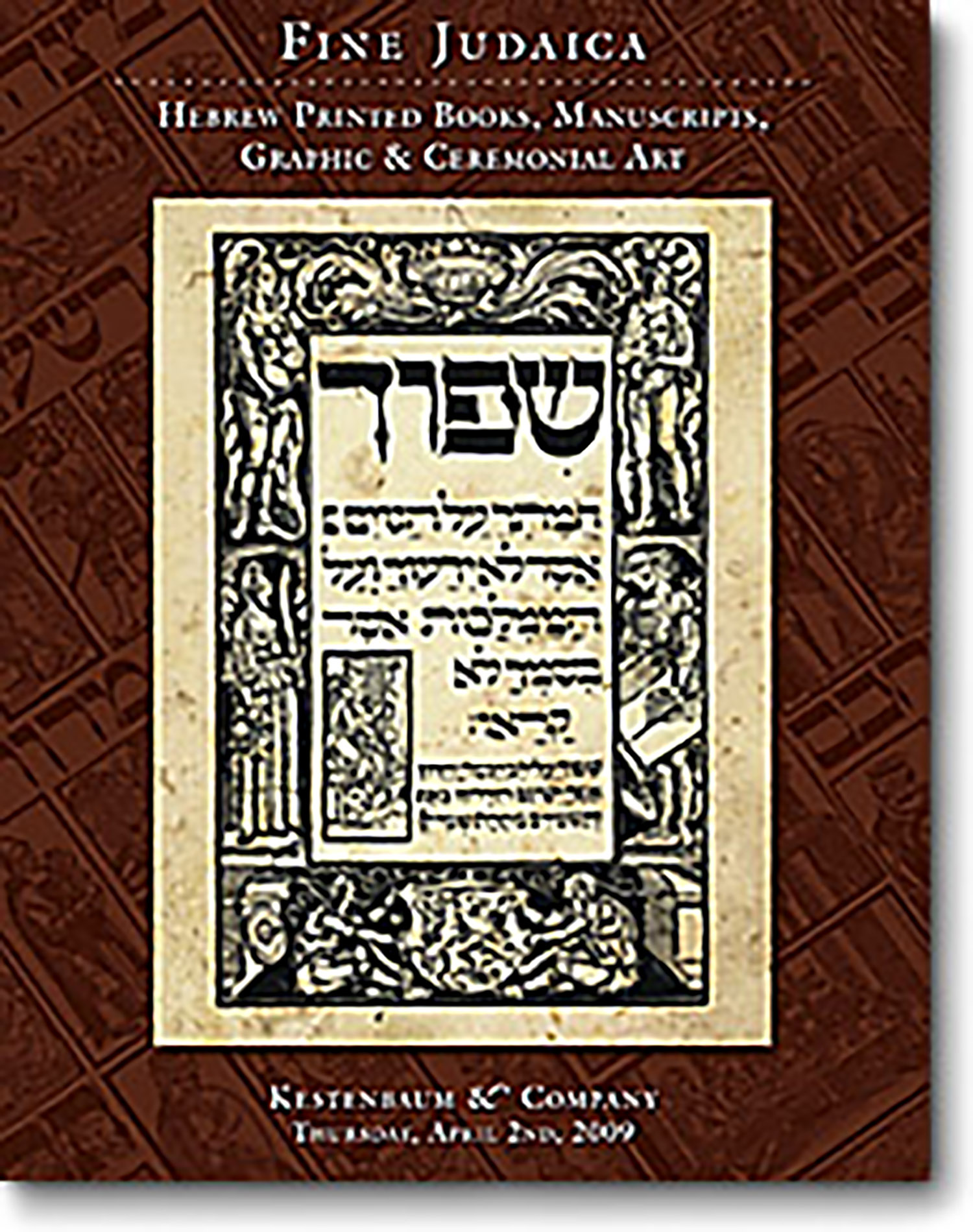Documents of Dr. Mayer and Yehudit Ginzburg, Displaced Persons 1946-1951, including correspondence with Chaplain Rabbi Joseph S. Shubow of Boston. c. 50 items, along with photographs

AUCTION 43 |
Thursday, April 02nd,
2009 at 1:00
Fine Judaica: Hebrew Printed Books, Manuscripts, Graphic & Ceremonial Art
Lot 269
(HOLOCAUST).
Documents of Dr. Mayer and Yehudit Ginzburg, Displaced Persons 1946-1951, including correspondence with Chaplain Rabbi Joseph S. Shubow of Boston. c. 50 items, along with photographs
Est: $400 - $600
PRICE REALIZED $350
These documents tell the story of the post-War rehabilitation of a Polish Jewish couple and their movements from the Pocking D.P. camp outside Munich, to residence in Paris and eventual migration to New York.
Born in Warsaw in 1906, Dr. Mayer Ginzburg was imprisoned in the Vilna Ghetto from September 1941 until September 1943, at which time he was transported to a labor camp in Estonia. He succeeded in escaping from the camp and joined partisans in the forests of Estonia and Lithuania. In August 1944 he returned to Vilna; not finding a single survivor of his entire family, he repatriated himself to Poland. Ginzburg found post-War Poland to be riven with anti-Semitism which led him to believe he should quit Europe altogether. (See affidavit presented to the American Embassy in Paris in August 1950).
While in the Pocking D.P. camp, Dr. Ginzburg came to the attention of U.S. Army Chaplain Joseph Shubow, who, after his return to Boston, continued a correspondence with Ginzburg, urging him to settle in America (rather than Palestine, as his brother). Shubow believed that Dr. Ginzburg's obvious medical talents and deep religiosity would be of great benefit to the American-Jewish community.
In Germany, Dr. Ginzburg married a fellow survivor, Yehudit Reinman of Narol, Galicia.
Within this archive is a particularly touching testimony from a Yeshiva student from Versailles who, in an eloquent Hebrew, thanks Dr. Ginzburg for saving his life from an unnamed illness. This student was Chaim Shemayah Segel, who in later life taught in Brooklyn's Chaim Berlin Yeshiva for more than 30 years.
Of particular interest are the documents from the Jewish Medical Association in the American Zone of Germany that indicate how in the immediate aftermath of the war, survivors of the Holocaust made great strides toward the resumption of their normal lives
